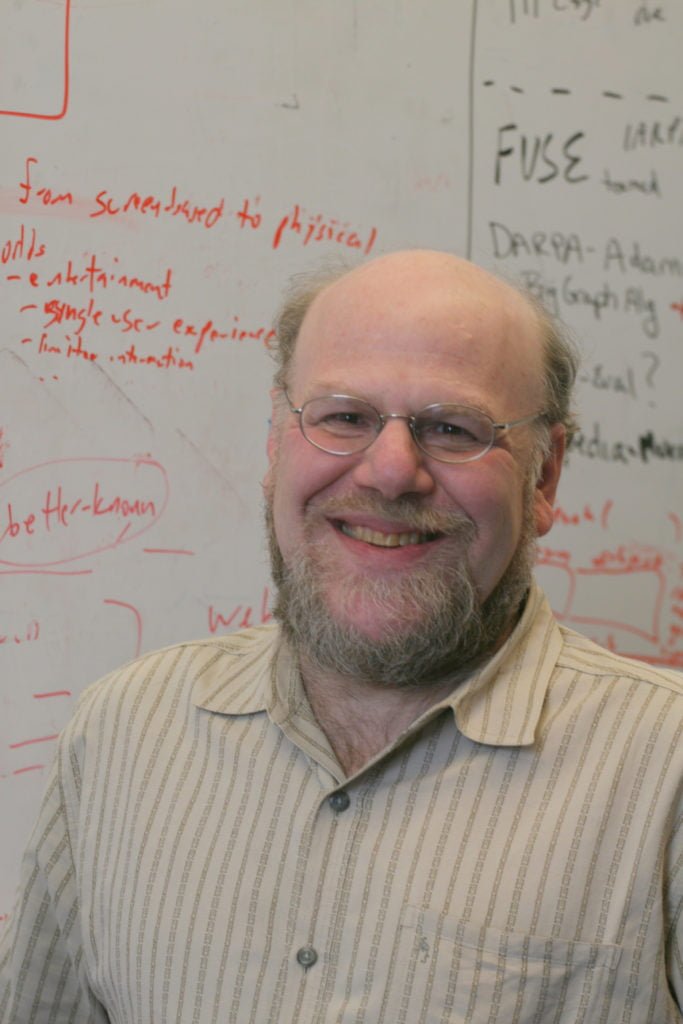Before learning about the development of the Web, we have to take a step back and talk about the theoretical, and practical, creation of this platform that has transformed the World.
In Ben Segal‘s words:
” In August 1984 I wrote an article to the Head of the SW Group (of CERN) Les Robertson to describe a pilot project to install and evaluate the TCP/IP protocol on some non-Unix machines at CERN […] By 1990 CERN had become the largest site in Europe […] and the world. A key result of all these shots was that by 1989 the CERN Internet network would become the measure from which Tim Berners-Lee would come to create the World Wide Web as a truly ideal idea… “
– Ben Segal, Short History of Internet Protocols at CERN, April 1995
Conteúdos
The development of the World Wide Web
The development of the Web began in 1980, when Englishman Berners-Lee a contract employee at CERN – European Organization for Nuclear Research, in Switzerland, developed ENQUIRE, a project used to recognize and store associations of information. Each new page in this system should be connected to another existing page in the system.
As early as 1984, Berners-Lee returned to CERN and found a very current problem: presenting and connecting information.
Scientists around the world needed to share data but the lack of a single platform leaves things somewhat complicated. So he prepared a proposal for a large database with hyperlinks which didn’t generate as much interest.
And here a key figure comes into the story: Mike Sendall, in TIm’s own words:
“It was Mike who followed my idea of getting one of the “NeXT” machines, and Mike, who suggested that I could go ahead and use it to play with the idea that global hypertext, a thing I was researching. When Robert Cailliau and I couldn’t figure out how to run the World Wide Web project between the two different divisions we were in, Mike advised us to continue.”
It was Sendal who encouraged him to implement his system on the newly acquired NeXT workstation. Several names have been thought of for this new network connecting scientific documents: Information Mesh, The Information Mine or Mine of Information, but we end up with WWW – World Wide Web. World Wide Web .

The Web was dreamed to be semantic from the start
It is easy to understand that the initial problem encountered, that is, getting different systems to understand the same documents, was already a problem of semantics.
It was only in 2001 that the idea of a semantic web . The article “Semantic Web: a new format for Web content that has meaning for computers will start a revolution of new possibilities.” published in Scientific American gave the “theoretical starting point” for what we are beginning to see the first results of today.
The authors of this important paper are Tim Berners-Lee, James Hendler and Ora Lassila.
The Pathfinders of the Semantic Web
Tim Berners-Lee

The best known of these three is actually Berners-Lee who is the current president of the World Wide Web Consortium (W3C ), a professor at MIT in the Artificial Intelligence and Computer Science Lab.
Perhaps one of the most important researchers of our century and considered by many to be one of the greatest geniuses of our time.
James Hendler

James Hendler works with Artificial Intelligence at RensselaerPolytechnic Institute in the United States.
Hendler has a long career as a professor at the University of Maryland, where he was Director of the Joint Institute for Discovery of the Knowledge and made joint appointments in the Department of Science of Computing, the Institute for Advanced Computer Studies and the Systems Research Institute, and was Director of Semantic Web and Agent Technology at the Maryland Information and Network Dynamics Laboratory.
He is a member of the American Association for Artificial Intelligence, the British Computer Society, the Institute of Electrical and Electronics Engineers, the AAAS, and the Association for Computing Machinery.
Ora Lassila

Ora lassila is an architect and technology strategist, currently working at Nokia Services and a member of Nokia’s CEO Technology Council. He was an elected member of the W3C Advisory Board from the beginning of the board in 1998 until 2013 as well as Nokia’s representative on the W3C Advisory Committee from 1998 to 2002.
He was a member of the Steering Committee of the Semantic Web Science Association.
This article is part of a series of articles looking at semantics from an SEO perspective. In the first part of this article we introduced the Semantic Web and in the third part we will start talking about semantics itself. In the third part of the series Semantic SEO we will talk about how semantics will create a New Web.


